Today Current Affairs: 31st January 2022 for UPSC IAS exams, State PSC exams, SSC CGL, State SSC, RRB, Railways, Banking Exam & IBPS, etc
Table of Contents
NeoCov:

NeoCoV is a bat coronavirus that was first identified in 2011.
- It was identified in a species of bats known as Neoromicia, which is where the name NeoCoV was derived from.
- Commonly known as aloe bats, this species is distributed in the Afro-Malagasy region. NeoCoV shares an 85% similarity to MERS-CoV in the genome sequence, making it the closest known relative of MERS-CoV
- Scientists in China have warned about a new strain of coronavirus, NeoCov, related to the Middle East respiratory syndrome MERS-coronavirus.
- NeoCoV carries with it the potentially combined high mortality rate of MERS-CoV (where one in three infected people die on average) and the high transmission rate of the current SARS-CoV-2 coronavirus.
India, Philippines Ink Deal For BrahMos Missiles:
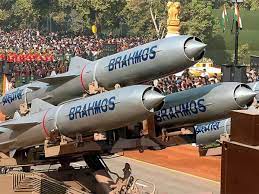
Philippines has signed a $374.96-million deal with BrahMos Aerospace Private Ltd. for the supply of shore-based anti-ship variant of the BrahMos supersonic cruise missile.
- This is the first export order for the missile, a joint product of India and Russia.
- BrahMos is a joint venture between DRDO (Defence Research and Development Organisation) and Russia’s NPO Mashinostroyeniya.
- The missile derives its name from the Brahmaputra and Moskva rivers.
- It is capable of being launched from land, sea, sub-sea and air against surface and sea-based targets and has for long been inducted by the Indian armed forces.
- The range of the missile was originally capped at 290 km as per obligations of the Missile Technology Control Regime.
- Following India’s entry into the club in June 2016, officials said the range would be extended to 450 km and 600 km at a later stage.
What Is Gain-Of-Function Research?
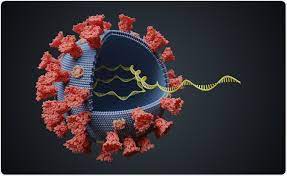
The term ‘gain of function research’ has recently cropped up in the debate about the origins of the Covid-19 pandemic.
- ‘Gain of function’ is a field of research focused on growing generations of microorganisms, under conditions that cause mutations in a virus.
- These experiments are termed ‘gain of function’ because they involve manipulating pathogens in a way that they gain an advantage in or through a function, such as increased transmissibility.
- Such experiments allow scientists to better predict emerging infectious diseases, and to develop vaccines and therapeutics.
- Gain of function research may use genetic engineering or serial passaging.
- Genetic engineering involves ‘editing’ the genetic code to modify the virus in a way predetermined by the scientists.
- Serial passaging involves allowing the pathogen to grow under different circumstances and then observing the changes.
- Gain-of-function research involves manipulations that make certain pathogenic microbes more deadly or more transmissible.
- There is also ‘loss-of-function’ research, which involves inactivating mutations, resulting in a significant loss of original function, or no function to the pathogen.
- Gain-of-function research reportedly carries inherent biosafety and biosecurity risks and is thus referred to as ‘dual-use research of concern’ (DURC).
- Serial passaging involves allowing the pathogen to grow under different circumstances and then observing the changes.
- The discussion around gain of function research came back to focus recently, after a report argued that the possibility of the virus accidentally leaking out of the Wuhan Institute of Virology could not be entirely dismissed.
- While scientists had earlier ruled out the possibility of the virus being ‘genetically engineered’, a recent report said serial passaging may have led to the evolution of the virus during an ongoing gain of function research project in the Chinese city.
Micro, Small And Medium Enterprises:
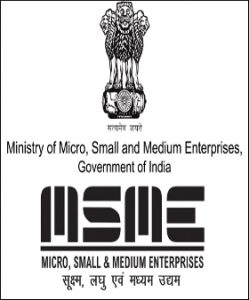
According to the data furnished by the Office of the Development Commissioner in the Union Ministry of MSME:
- Maharashtra tops India’s list in the number of micro, small and medium enterprises (MSME) owned by entrepreneurs from the Scheduled Castes with as many as 96,805 enterprises.
- Tamil Nadu with 42,997 enterprises and Rajasthan with 38,517 units occupy the second and third slots.
- The fourth, fifth and sixth slots belong to Uttar Pradesh (36,913 units), Karnataka (28,803 enterprises) and Punjab (24,503 units) respectively.
- As on January 23, 2022, the number of SC-owned enterprises at the all-India level was 4,53,972, of which micro enterprises accounted for 4,50,835, small – 3,004 and medium – 133.
- At National level: Generally, the proportion of enterprises owned by Scheduled Caste entrepreneurs in the overall national tally of MSMEs is 6%.
- The Udyam system of registration, which came into force on July 1, 2020, is a pre-requisite for any MSME (regardless of the social category of ownership) to avail itself of concessions or benefits from the Central and State governments.
- The Registration can be filed online based on self-declaration. Uploading of documents, papers or certificate as proof would not be necessary henceforth.
- The basic criteria for MSME classification would be on investment in plant, machinery and equipment and turnover.
- Export of goods or services or both would be excluded while calculating the turnover of any enterprise and investment calculation linked to the IT return of the previous year.
- Champions Control Room across the country have been made legally responsible for facilitating entrepreneurs in registration and thereafter.
India- Pakistan Joint Protocol On Religious Pilgrimages 1974:

The Ministry of External Affairs (MEA) announced that India is “positive” and “willing to engage” in talks with Pakistan on upgrading the 1974 Joint Protocol on Religious Pilgrimages.
- It will allow air travel as well as increase the number of shrines pilgrims from both countries could visit.
- The government also reopened the Kartarpur Sahib Gurudwara corridor to Pakistan to allow Sikh pilgrims to cross over, more than 20 months after it was shut down due to the Covid-19 pandemic.
- Earlier, India and Pakistan had exchanged a list of their nuclear installations.
- Under the protocol both the countries agreed on the following principles for facilitating visits to such shrines :
- Pilgrimage visits from one country to the other shall be allowed without discrimination as to religion or sect. The list of shrines to be visited shall be finalised shortly through correspondence.
- The agreed list may be enlarged from time to time by mutual agreement.
- The protocol currently includes five Muslim shrines on the Indian side and 15 shrines on the Pakistani side, a majority of them gurdwaras.
- Upto 20 parties may be allowed to visit from one country to the other every year. This number may be revised from time to time.
- Every effort should continue to be made to ensure that places of religious worship mentioned in the agreed list are properly maintained and their sanctity preserved.
- Such visitors will be given Visitor Category visas.
Webinar On Cage Aquaculture In Reservoir: Sleeping Giants
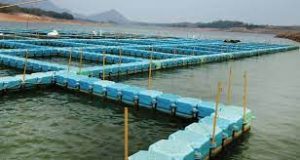
The Ministry of Fisheries, Animal Husbandry and Dairying organised a webinar on “Cage aquaculture in Reservoir: Sleeping Giants” as a part of “Azadi Ka Amrit Mahotsav”.
- Department of Fisheries, GOI earmarked the investment targets for promoting cage aquaculture under flagship scheme Pradhan Mantri Matsya Sampada Yojana (PMMSY).
- Cage aquaculture involves the growing of fishes in existing water resources while being enclosed in a net cage which allows free flow of water.
- It is an aquaculture production system made of a floating frame, net materials and mooring system (with rope, buoy, anchor etc.) with a round or square shaped floating net to hold and culture large numbers of fishes and can be installed in reservoir, river, lake or sea.
- Cage farms are positioned in such a way to utilize natural currents, which provide the fish with oxygen and other appropriate natural conditions.
Factors Causing Cage Culture:
- Factors such as increasing consumption of fish, declining stocks of wild fishes and poor farm economy have increased interest in fish production in cages.
- Many small or limited resource farmers are looking for alternatives to traditional agricultural crops.
- In view of the high production attainable in the cage culture system, it can play a significant role in increasing the overall fish production in India.
Fly Ash Management And Utilisation Mission:

The National Green Tribunal (NGT) directed the constitution of a ‘Fly Ash Management and Utilisation Mission.
- The order by the NGT takes note of the ‘unscientific handling and storage’ of the fly ash by coal thermal power stations.
- For example, the draining of industrial effluents and fly ash in the Rihand Reservoir.
- The Fly Ash Management and Utilisation Mission, besides monitoring the disposal of annual stock of unutilised fly ash, will also see how 1,670 million tonnes of legacy (accumulated) fly ash could be utilized in the least hazardous manner and how all safety measures could be taken by the power plants.
- The Mission will hold its first meeting within one month to assess the fly ash management situation in coal power plants and to prepare action plans to build road maps for ash utilisation by individual plants.
- These meetings shall be conducted each month, for a year.
- Aim: To ‘coordinate and monitor issues relating to the handling and disposal of fly ash and associated issues.’
Head & Nodal Agency: - The Mission is to be jointly headed by the secretaries of the Union Ministry of Environment, Forest & Climate Change (MoEF&CC), Union Ministry of Coal and Power, keeping on board chief secretaries of respective states where the mission is being implemented.
- The secretary of MoEF&CC will be the nodal agency for coordination and compliance.
Fly Ash:
- Fly ash is an unwanted unburnt residue of coal combustion in a coal thermal power plant.
- It is emitted along with flue gases during the burning of coal in a furnace and collected using the electrostatic precipitators.
- The fly ash collected with the help of precipitators is converted into a wet slurry to minimise fugitive dust emissions.
- It is then transported to the scientifically designed ash ponds through slurry pipelines.
- Composition: Fly ash includes substantial amounts of silicon dioxide (SiO2), aluminium oxide (Al2O3), ferric oxide (Fe2O3) and calcium oxide (CaO).
Suspension Of MLAs:
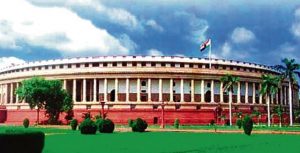
The Supreme Court has set aside the one-year suspension of 12 BJP MLAs from the Maharashtra Legislative Assembly. The Supreme Court held that suspension for a year was ‘unconstitutional, substantively illegal and irrational’.
- The MLAs were suspended for misbehaviour in the Assembly pertaining to disclosure of data regarding OBCs.
- The challenge to suspension relies mainly on grounds of denial of the principles of natural justice, and of violation of laid-down procedure.
- The 12 MLAs have said they were not given an opportunity to present their case, and that the suspension violated their fundamental right to equality before the law under Article 14 of the Constitution.
- Rule 53 of Maharashtra Assembly: It states that the “Speaker may direct any member who refuses to obey his decision, or whose conduct is, in his opinion, grossly disorderly, to withdraw immediately from the Assembly”.
- The member must “absent himself during the remainder of the day’s meeting”.
- Should any member be ordered to withdraw for a second time in the same session, the Speaker may direct the member to absent himself “for any period not longer than the remainder of the Session”.
Provisions for Suspension of a Member of Parliament
- Rules 373, 374, and 374A of the Rules of Procedure and Conduct of Business in Lok Sabha provide for the withdrawal of a member whose conduct is “grossly disorderly”, and suspension of one who abuses the rules of the House or willfully obstructs its business.
- The maximum suspension as per these Rules is “for five consecutive sittings or the remainder of the session, whichever is less”.
- The maximum suspension for Rajya Sabha under Rules 255 and 256 also does not exceed the remainder of the session.
- Similar Rules also are in place for state legislative assemblies and councils which prescribe a maximum suspension not exceeding the remainder of the session.
Supreme Court (SC) Refused To Lay Down The Yardstick For Reservation:

The Supreme Court (SC) refused to lay down the “yardstick” for determining the inadequacy of representation for granting reservation in promotions for Scheduled Caste (SC)/Scheduled Tribe (ST) candidates in government jobs.
- The court’s judgement came in a batch of petitions from across the country seeking further clarity on the modalities for granting reservation in promotion.
SC’s Ruling:
- It held ‘cadre’ and not class, group or the entire service as the unit for the purpose of collection of quantifiable data for giving promotion quotas.
- It said otherwise the entire exercise of reservation in promotions would be rendered meaningless if data pertaining to the representation of SCs and STs was done with reference to the entire service.
- The question of adequate representation of an SC/ST community ought to be left to the respective States to determine and it cannot lay down any yardstick for determining the inadequacy of representation.
- With the recognition of ‘cadre’ as the unit for collection of quantifiable data, the court set aside its earlier judgement in the B.K. Pavithra case.
- SC held that the conclusion of this court approving the collection of data on the basis of groups and not cadres is contrary to the law laid down by the SC in Nagaraj and Jarnail Singh judgments.
- The court held that the Nagaraj judgement would have “prospective effect.”
- The SC ordered that a review had to be conducted regarding the data for the purpose of determining the inadequacy of representation in promotions.
- However, the court left it to the Union government to fix a “reasonable” time for the States to conduct the review.
- Reservation in Promotions:
- The Central and the State Government since the 1950s have been following a policy of reserving seats in promotions in favours of SC and ST communities on the ground that they are not adequately represented at the decision making level of public services.
Avascular Necrosis (AVN):
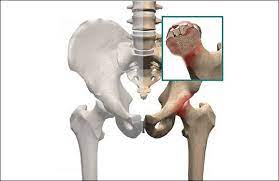
The health woes of the patients infected with Covid-19 in the second wave still continues as many are being diagnosed with the long post-Covid complications of Avascular Necrosis (AVN), referred to as bone death.
- To find a clinical explanation, All India Institute of Medical Sciences (AIIMS) has submitted a proposal to the Indian Council of Medical Research (ICMR) seeking approval for a multicentric study to probe cases of AVN among Covid-19 recovered patients.
- The AVN is not a new ailment. Before Covid, this case was found due to smoking, alcoholism, and steroid use linked to other conditions.
- AVN, or Osteonecrosis, is a common cause of painful hips in youngsters. It occurs due to the restricted blood supply to the bone, resulting in loss of its density and weight-bearing capacity.
- As the bone breaks into small pieces, the patient suffers unbearable pain and loses mobility completely. Hip bones are more prone to this.
- Not all patients with AVN need to undergo hip replacement surgeries. When the disease progresses in the first or second stage, core decompression surgeries are conducted. When it reaches the third and fourth stages, then joint replacement surgeries are done.
Scheme On Enhancement Of Competitiveness In The Indian Capital Goods Sector- Phase-II:

Ministry of Heavy Industries (MHI) has notified the Scheme on Enhancement of Competitiveness in the Indian Capital Goods Sector- Phase-II for providing assistance to Common Technology Development and Services Infrastructure.
- The scheme has a financial outlay of Rs. 1207 crores with Budgetary support of Rs.975 crore and Industry Contribution of Rs.232 crore .
- The scheme was notified on 25th January, 2022.
- The objective of Phase II of the Scheme for Enhancement of Competitiveness of the Capital Goods Sector is to expand and enlarge the impact created by Phase I pilot scheme, thereby providing greater impetus through creation of a strong and globally competitive capital goods sector that contributes at least 25% to the manufacturing sector.
- There are six components under the Scheme for Enhancement of Capital Goods Sector Phase II, namely:
- Identification of Technologies through Technology Innovation Portals;
- Setting up of four New Advanced Centres of Excellence and augmentation of Existing Centres of Excellence;
- Promotion of skilling in Capital Goods Sector–creation of Qualification packages for skill levels 6 and above;
- Setting up of four Common Engineering Facility Centres (CEFCs) and augmentation of existing CEFCs;
- Augmentation of Existing Testing and Certification Centres;
- Setting up of ten Industry Accelerators for Technology Development
Diving Support Craft (DSC) Project
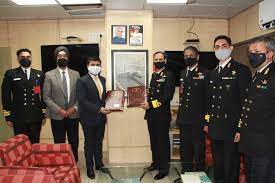
Keel laying for the first ship of Diving Support Craft (DSC) project was held on 27 Jan 2022 in virtual presence of representatives from the Indian Navy, at M/s Titagarh Wagons Ltd., Kolkata.
- The contract for procurement of Five Diving Support Crafts (Yards 325 to 329) for the Indian Navy was signed in Feb 2021 with M/s Titagarh Wagons Ltd.
- The ships will be commissioned in the Indian Navy to provide diving assistance for ships inside and close to harbour, for underwater repairs, maintenance and salvage.
- The ships will be fitted with state-of-the-art diving equipment and tools for performing the diving operations.
- With all main and auxiliary equipment sourced from indigenous manufacturers, these ships are proud flag bearers of Make in India initiatives of the Ministry of Defence.
Advanced Light Helicopter (ALH) MK III Aircraft:
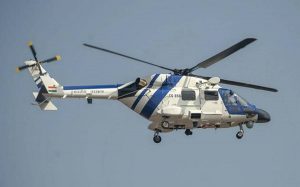
In a boost to maritime security, the indigenous Advanced Light Helicopter (ALH) MK III aircraft was formally inducted at INS Utkrosh by Commander-in-Chief, Andaman and Nicobar Command (CINCAN) Lieutenant General Ajai Singh at Port Blair on January 28, 2022.
- The ALH MK III aircraft is manufactured by Hindustan Aeronautics Limited and represents a tremendous leap towards self-reliance in the field of military aircraft.
- Till date, over 300 of these aircraft have been delivered by HAL and are being flown by the Armed Forces.
- Amongst its variants, the MK III variant is a maritime role variant encompassing state-of-the-art sensors and weapons that add punch to India’s prowess at sea.
- The ALH MK III aircraft with its glass cockpit, Shakti engines, advanced Maritime Patrol Radar, Electro–optical payload and Night Vision Device will act as a force multiplier in keeping India’s far eastern seaboard and Island territories safe.
- The state-of-the-art aircraft has multirole capabilities including maritime surveillance, support for Special Forces, medical evacuations besides search and rescue roles.
Dr V. Anantha Nageswaran :Chief Economic Advisor

The Government has appointed Dr V. Anantha Nageswaran as the Chief Economic Advisor.
- Prior to this appointment, Dr. Nageswaran has worked as a writer, author, teacher and consultant. He has taught at several business schools and institutes of management in India and in Singapore and has published extensively.
- He was the Dean of the IFMR Graduate School of Business and a distinguished Visiting Professor of Economics at Krea University.
- He has also been a part-time member of the Economic Advisory Council to the Prime Minister of India from 2019 to 2021.
- He holds a Post-Graduate Diploma in Management from the Indian Institute of Management, Ahmedabad and a doctoral degree from the University of Massachusetts in Amherst.
Septemeranthus:
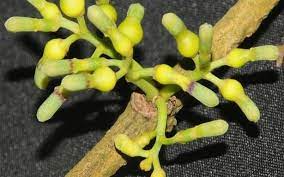
A new genus of a parasitic flowering plant has recently been discovered from the Nicobar group of islands.
- The genus Septemeranthus grows on the plant species Horsfieldia glabra (Blume) Warb.
- The parasitic flowering plants have a modified root structure spread on the stem of the tree and are anchored inside the bark of the host tree.
- The plant was found on the periphery of the tropical forest in one of the biodiversity hotspots referred to as the Nicobar group of islands separated from the Andaman group of Islands by a wide gap of 160 km with heavy tidal flows.
- The genus Septemeranthus has a distinct vegetative morphology, inflorescence architecture and floral characters.
- The leaves of the plant are heart-shaped with a very long tip and the ovary, fruit and seeds are ‘urceolate’ (earthen pot-shaped).
- The flowers have five persistent bracts having conspicuous margins.
- The name Septemeranthus is derived from the Latin word ‘septem’ meaning ‘seven’, referring to the arrangement of flowers.
- The genus belongs to the family Loranthaceae, a hemi-parasite under the sandalwood order Santalales and is of widespread importance.
- Plants which are hemi-parasites are partially dependent on their host plants for nutrition. For instance, the newly discovered plant that derives nutrients from its hosts has green leaves capable of photosynthesis.




